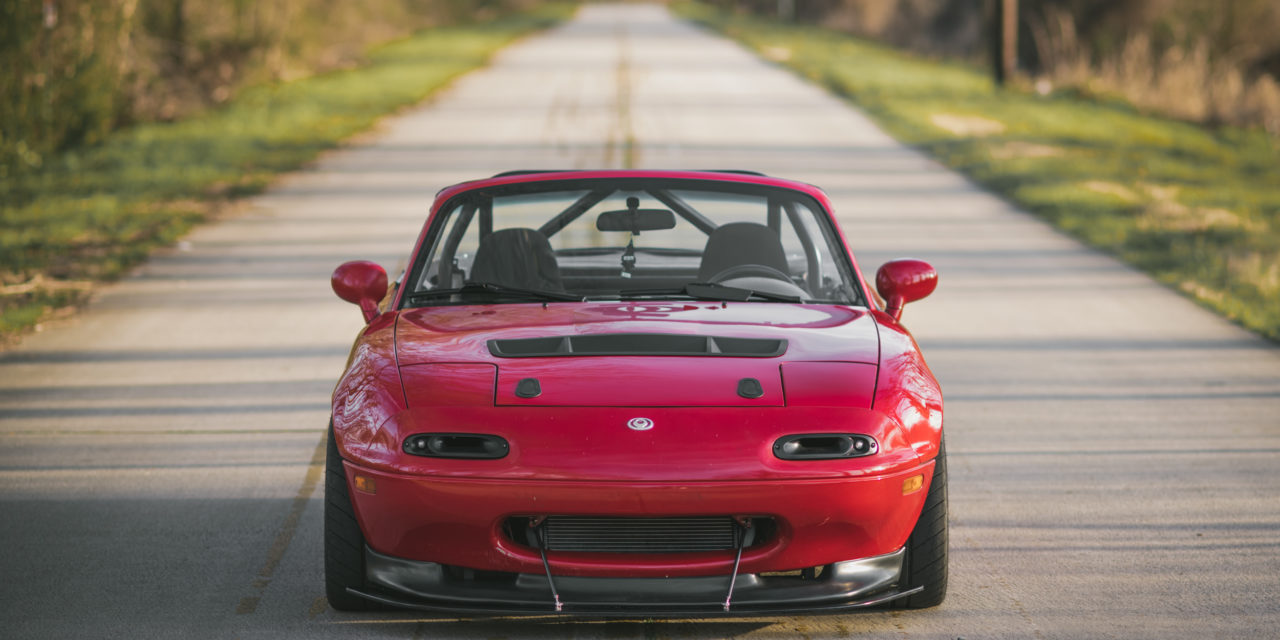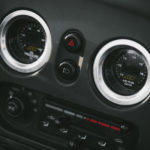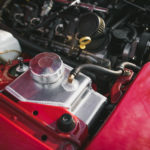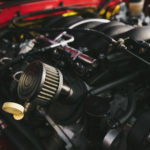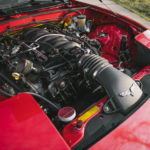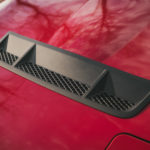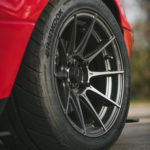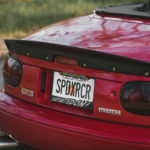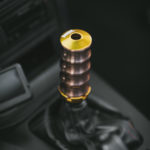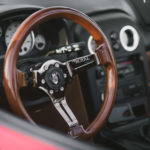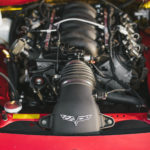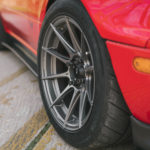Dude. I feel kinda bad for all you guys who don’t live down South. Because you’re missing out on something great & you don’t even know it. There’s a different kind of species around here. And thats: the good ol’ boy Southern type of guys… who love guns, their mamma, and IMPORTS. And forget what you heard; it’s the perfect mashup… like hamburgushi (hamburgers in Sushi, duh).
The way you hear words like ‘Tomei’, ‘Volk TE37V’, and ‘Skyline’ just roll off the tongue with a Southern drawl. The way you see an honest respect & admiration for JDM & West Coast styling, mixed with that homegrown, hammer-down, rip-your-face-off American displacement. Add to that – long country roads, laid back emissions/regulations, and police who tend to think your car is as cool as you do (so long as it’s got that V8 whew buddy!). You… you just don’t get that outside the South, and I’m sorry. Closest thing you get maybe, is the hot-sauce scene in Tokyo Drift.

So this is Michael Freeman. Michael is from Macon, GA… a town so special, Porsche named an SUV after it. Michael loves imports big-time, and he sticks LSs into literally every damn thing he builds. Everything. That what he’s known for. And you can say all you want about how LSs are overdone, played-out, and everywhere… well so are Waffle Houses & Chick-Fil-As. Because they’re awesome.
Michael bought this Miata as a bare-bones, semi-crashed tub. And all the work & wiring was done in Michael’s garage with his own hands. What you see is what you get – a driver. It’s not a ‘show winner’ necessarily… but it’s sorted, well-oiled, and ready to roll.

The engine is an aluminum LS1 from an early 2000s Firebird, with some LS3 tweaks up top. Michael’s a fan of keeping it simple, fun, and functional… so he likes to use OEM parts where he can engine-wise. The car’s making a totally unburdened 400whp, and it’s as reliable as the trash truck outside my window at 6am. And keep in mind, that’s in a 2,000lb short wheelbase vert, with the aluminum LS… which come on, doesn’t way hardly any more than a Mazda motor once you put a turbo + accessories on it. Sure, the tranny’s a bit heavier, but that’s because it’s built to handle actual horsepower (plural). And it’s in the center of the car so…… big deal who cares.
Michael mentioned his surprise at how people seem to be so drawn to this Miata. It’s admittedly not the ‘cleanest’ build to ever come out of his garage. But clean is usually overrated. People connect with this thing, because it’s real. And you can feel it’s aura a little bit, when you’re around it. In the late 50’s, hot rodders were taking ’32 Ford Roadsters, cutting them up, and working ‘em over with more powerful motors, etc… just to hit the streets & raise a little hell. Do a little generational-math (‘30s—>’50s versus ‘90s—>2018)… and you’ll find that these days, the OG Miata is your ’32 Ford roadster. Only – the Miata is also a sports car. And pretty much capable of anything you want to do with it.
GM LS1/T56 engine/tranny combo
Texas Speed torquer v2 cam
Texas Speed chromoly push rods
Pac dual valve springs
SPEC stage-1 plus clutch
SPEC billet flywheel
MGW shifter
LS6 intake
Holley oil pan
LS7 Vette maf
LS7 airbridge
Custom an fuel lines
Griffin radiator
Canton racing overflow
Custom modified Sanderson headers
Custom dual 2.5 exhaust
V8 Roadsters subframe cradle
V8 Roadsters frame rails
V8 Roadsters differential mount
Cadillac CTS-V 3.42 LSD differential
Driveshaft Shop axles
Driveshaft Shop driveshaft
Grip Royal steering wheel
NRG hub/quick release
Garage Vary lip
Custom front splitter
KGworks rear spoiler
GT500 hood vent
PBM shift knob
Hard Dog ‘hard core’ double diagonal roll bar
Advanti Wheels – Storm S1 in 15×9 +35
Hankook Ventus rs4 tires – 245/40/15
Muteki lug nuts
AEM gauges
Fortune Auto 500 coilovers

Canton Coolant Overflow
The appeal of the Canton universal coolant tanks, is that they’re kind of a no-brainer & cost-effective option, when considering what it would cost a builder to fabricate & weld a tank. The basic sizes & shapes make it efficient & effective for what builders usually need. Canton also offers a few different tanks that have multiple different uses, depending on how it gets installed.
Cooling systems are one of the most critical systems of an engine. Running an engine too hot can cause fluids and parts to break down & can ultimately lead to a catastrophic failure. But at the same time, an engine that is running too cold can be inefficient & poor performing.
Your typical liquid-cooled system usually features a radiator, fan, thermostat, water pump, a coolant tank, and a fill point. In many modern cars, the radiator is mounted lower than the engine. And since that radiator is lower than the engine, you need a pressure relief & fill point that is higher than the engine. This is accomplished with an expansion tank. Conversely – when the radiator is high enough to act as a fill point & pressure relief, an expansion tank is not necessarily required. In those applications a recovery style tank may be used instead.
Liquid-cooled systems are ‘pressurized’ in order to raise the boiling point of the coolant. The boiling point of a 50/50 coolant water mix is 226 degrees F at 0psi. But at 16psi the boiling point of a 50/50 mix raises to 267 degrees F. One of the easiest ways to differentiate between an expansion tank and a recovery tank – is to figure out whether the tank is part of the pressurized part of the coolant system or not.
Expansion Tank Set Up:
An expansion tank is part of the pressurized section of the coolant system. It can easily be recognized by the neck and cap used. Since the tank is under pressure it will require a pressure-rated cap and neck. The pressure relief in the expansion tank should be the highest point in your coolant system.
An expansion tank is designed so there is space in the tank for the coolant to expand. An expansion tank can also be used as a fill-point for the system. When an expansion tank is used, the radiator itself doesn’t require a pressure relieving cap, because the expansion tank’s cap will perform the duties that the cap on the radiator traditionally did. Increasing the capacity of the system, & providing a more convenient fill point are among some of the benefits of an expansion tank.

Recovery/Reservoir Tank Set Up:
In contrast, a recovery/reservoir tank typically features a vented cap, and is not required to be above the cylinder heads. The job of the recovery/reservoir tank is to hold the coolant that is discharged from the system’s pressure relief when the coolant is hot & expanding. When the system cools, the cooling affect creates a vacuum that pulls this coolant back into the system.
A coolant recovery/reservoir tank gives the system the ability to discharge & recharge coolant when needed to maintain the appropriate pressure. This allows the system to maintaining full coolant capacity at all times.
A recovery/reservoir tank can be used in conjunction with an expansion tank, or can be plumbed off of a radiator that features a pressure relief.
A recovery/reservoir tank should not be confused with a catch tank however. A recovery/reservoir tank will either be plumbed at the bottom of the tank, or have a hose internally that runs to the bottom so coolant can be drawn back into the system. A catch tank, on the other hand, usually features plumbing into the top of the tank and does not have a hose that goes to the bottom. A catch tank serves to collect expelled coolant to be drained from that tank at a later point. While both a recovery/reservoir tank and a catch tank hold excess coolant, a recovery/reservoir will automatically put the coolant back in the system, whereas a catch tank will hold the coolant until it can be emptied.
Text by Wooley Photos by Andy Carter

